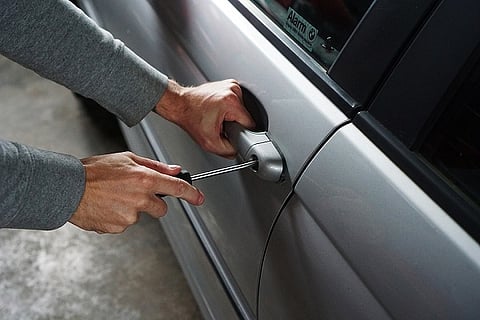
- News Updates
- PSU Watch
- Defence News
- Policy Watch
- हिन्दी न्यूज़
- Jobs Watch
- States News
- Event News

New Delhi: Car thieves will have their work cut out before long. In a move to make it practically impossible for thieves to dispose of stolen vehicles even after dismantling, the government has given the nod to the new "Microdots" technology that will give vehicle robbers no chance of getting rid of the dots and make vehicles untraceable.
This technology involves is a process of spraying thousands of microscopic dots onto vehicles to provide it with a unique identification. These small laser-etched dots consist of nano-sized (0.5 mm) particles that hold data such as vehicle identification number and a unique number. While the sprayed dots are present all over the vehicle body, it is easy to track the vehicle.
Even a small part of the car that has been dismantled can be used to trace the stolen vehicle. The dots can be made visible through ultraviolet light. This technology is used in many nations around the world including the US and South Africa, with the latter even making it mandatory to have microdot sprayed to all new vehicles sold from September 2012.
CMVR-TSC, the country's top automobile technical standard making body, has decided on the standard in its meeting in February. A notification will soon be issued to roll-out this technology in India. Initially, the government plans to launch the technology as an optional system with the price of this feature expected to be about Rs 1,000.
At least 10,000 microdots would be needed for four-wheeler vehicles like cars, trucks or buses, while at least 5,000 such dots would be required for a two-wheeler. The manufacturers will also make sure that the dots stay readable for 15 years at the very minimum following its fitment.
